There is no shortage of concepts, skills and models within HR, all of which aim to raise performance, engagement or both. While many are well researched have been around for 20 or more years, it's hard to find good examples of their evolution. Many of these ideas and approaches have not kept pace with other changes in business[1] and as a result, HR and L&D can, from some people's point of view, feel like a side show or that the function's sole purpose seems to be the repetition and regurgitation of the latest buzz word.
The Hack
This hack concerns the introduction of a new idea and accompanying skill. The idea is that it is now possible to predict and forecast people's relationships. Whilst it is possible to forecast many different things in business e.g. manufacturing defects, cash flows, and project costs amongst others, it has not been possible to apply the same level of forecasting to people's interactions. However, the use of 4G now makes this a reality and by extension, introduces new concepts and accompanying skills.
Mini Hack in Practice - The Challenge of Predicting Relationships
What do we mean when we talk about predicting relationships? Consider diagram 1 with a group of 6 people in it (the 3 character abbreviations below each person's name indicate the Social Profile of that particular person). Amongst the 6 people, there are 15 possible paired relationship combinations i.e. 15 different ways to match every person into a pair[2].
In terms of predicting the relationships between everyone, it's going to be quite a challenge for two reasons. Firstly, knowing how each of the 15 different relationship combinations will unfold and how their strengths, weaknesses, context and nuances will develop is difficult in and of itself, particularly if the people in question haven't yet met each other!
The second reason is due to the fact that observing a relationship will alter the relationship itself. Whilst observing a relationship isn't the same as predicting it, this still brings it's own challenges. Because people will typically change their conversation when a third person joins them, it is very difficult to create a genuine observation of the relationship in question. Of course, people catch glimpses of conversations, observe people working together in groups and get to know others over time. While all of this is to be expected, this is more a function of good management than being able to predict how people will interact with each other before they meet.
Predicting Relationships amongst Pairs
Take a look at diagram 2. By using 4G and Social Relationships, it is possible to predict, in advance of people meeting each other, the type and nature of the relationship between any two people. Diagram 2 illustrates 3 relationships from a possible 15.
The coloured lines represent the amount of effort or energy needed in order for each relationship to be productive. Green relationships require the least amount of effort and are the most productive. Blue relationships then need a little more effort, whilst yellow and red relationships (not shown in diagram 2) require even greater levels of effort and energy.
Predicting Relationships in Groups
Whilst diagram 2 showed just 3 relationships between pairs of people, diagram 3 extends this concept to show all 15 relationships amongst the group of 6. As before, the colours offer a visual overview of the team dynamics, whilst highlighting the comparative complexity in the group.
Understanding Relationships and Group Dynamics in more Detail
Whilst diagrams 2 and 3 show a visual representation of team relationships via the coloured lines, diagrams 4 and 5 offer text based information, creating an in-depth understanding of the group in question. It should also be noted at this point that while only 4 colours are used in the diagrams, 4G contains 14 specific Social Relationships and 16 different Social Profiles. As a result of this greater granularity, diagram 4 offers a bullet point summary of Hugh Morton's Social Profile (3Se), whilst diagram 5 shows much more detailed information about the relationship between Ajay and Leanne (a Relationship of Reflection).
Much more detailed information about people's Social Profile, and the nature of each of the Social Relationships and related coaching and developmental recommendations are also available from 4G.
Implications
The ability to make accurate and consistent predictions about people's relationships, either in advance of people meeting, or to describe relationships between existing colleagues has a number of benefits for:
- Decision making
- Business processes
- Learning and development activities
As a new concept, 4G presents a conceptual framework through which to view many aspects of managing and working with people. The following list offers further thoughts on the implications of this hack:
- Due to is predictive and re-usable output, 4G can be used on an ongoing basis as part of a business process that attracts an ROI, economies of scale, or 'economies of learning' - as opposed to being used as part of a one-off, unique event where the value generated is difficult to scale and replicate.
- Given the underlying methodology behind 4G, it can be applied and understood in a consistent and objective fashion by many different people, creating a scalable and sustainable processes - rather than just being used by a small number of experts on an ad-hoc basis.
-
Given the breadth of applications of 4G and the hacks presented, there is the possibility to create a learning and development syllabus with multiple levels of expertise and experience accounted for, similar to the professional qualifications offered by Six Sigma or Microsoft for example.
- This then creates a widely applicable and transferable skill to multiple constituents within an organisation e.g. subject matter experts, trainers, departmental heads, line managers, 'top talent' and new managers etc.
- 4G aligns many of the objectives and needs of managers and team members. Assuming that both parties want the benefits of a productive working environment, good communications, trust, engagement, the effective use of time and common goals, then 4G offers one input as a means to enhance this alignment. By extension, green and blue relationships quickly align the mutual interests of managers and team members.
- 4G works at it's best when considering the relationships we share with those we work most closely with i.e. our manager(s), colleagues and peers. Typically, these are also the relationships that are most important to us and are the relationships that have the greatest impact on performance and engagement.
Footnotes
1. Although this point was raised at the CIPD conference in 2012, the last 10 or 15 years has seen increasing adoption of new approaches and practices such as coaching, emotional intelligence and positive psychology. That said, it would be difficult to claim that HR or L&D has 'pushed the envelope' in terms of innovation when compared to other functions.
2. Just to extend the example and to illustrate how quickly the number of combinations can rise, if there are 10 people to choose from for a team of 5 people, there are 252 possible combinations.
Please read the other hacks I've submitted:
- Relational Recruitment and Optimising Team Creation for Group Cohesion
- Better Engagement through Enhanced Decision Making, Personalised Coaching and Aligning the Management of Processes and People
- Predictive Change Management and Creating an “Army” of Change Agents
- Linking HR Metrics to Financial Outcomes - Quantifying Behaviour and Linking it to the Bottom Line
- 6 Processes for HR Transformation
Bruce, thanks for this hack. It is precisely this sort of combination of new technology with old/new insights about human nature that HR / LD needs to be thinking about and upgrading itself on. How to leverage human potential in organizations vs. squash it. Thinking about how to strengthen relationships and monitor/learn from experience is at the heart of much of organization life. Great contribution!
- Log in to post comments
A number of the Hacks you submitted resonate with me Bruce, I look forward to exploring how some of these ideas overlap and interact as we focus on the evolution of technology based tools that will help us all find the right people to work with and the right places to work.
Speak soon
- Log in to post comments



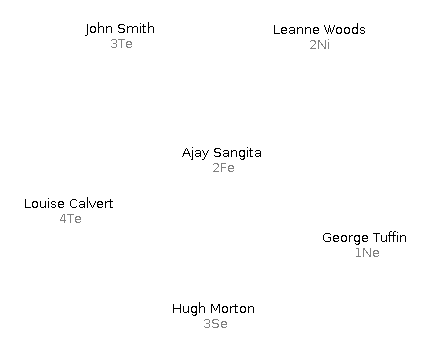
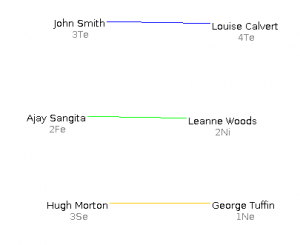
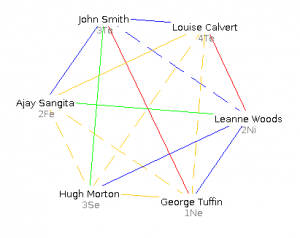
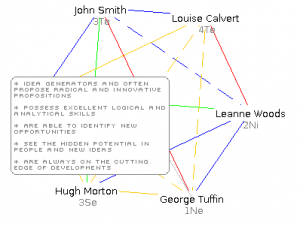
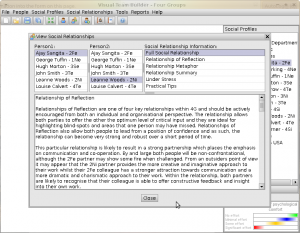


You need to register in order to submit a comment.